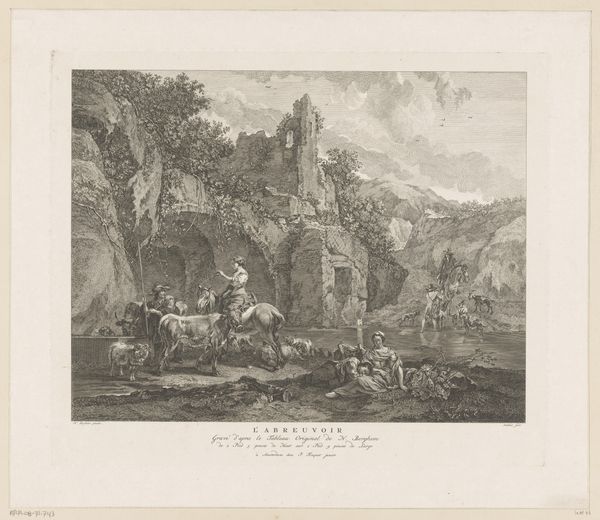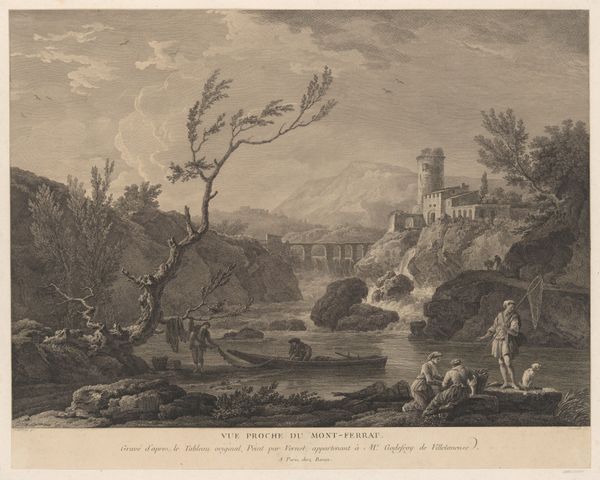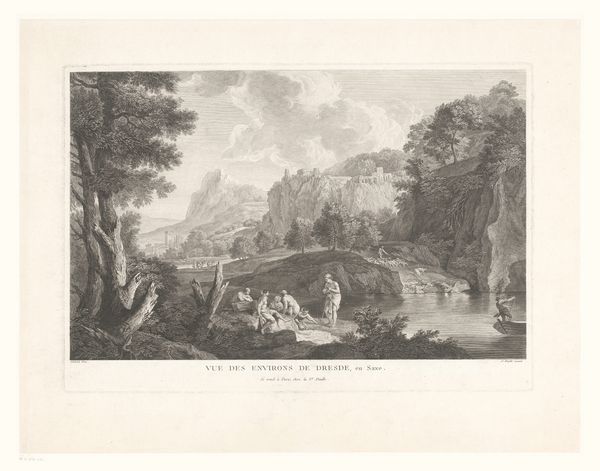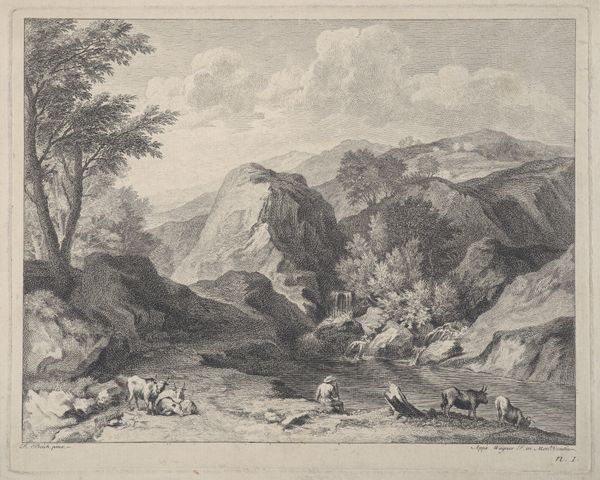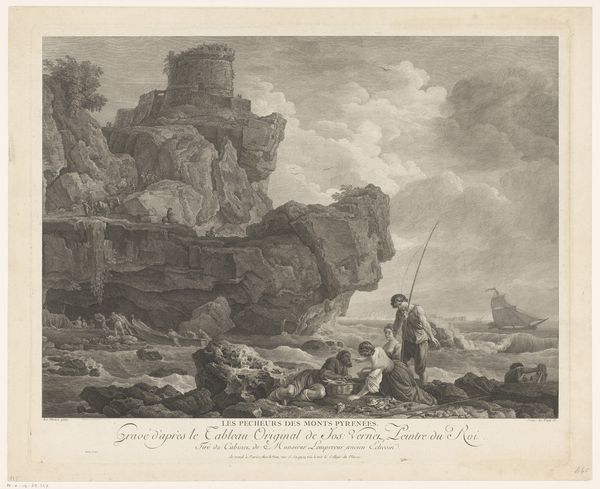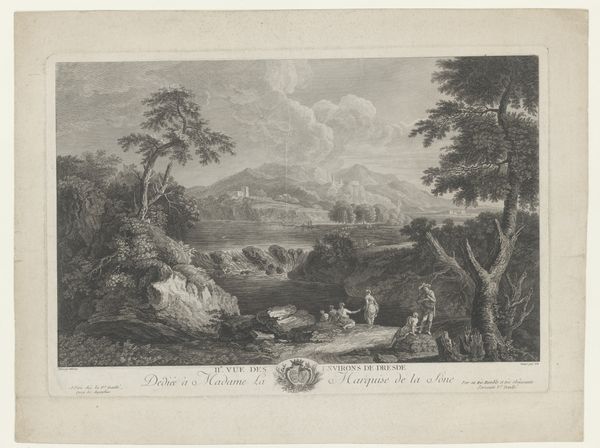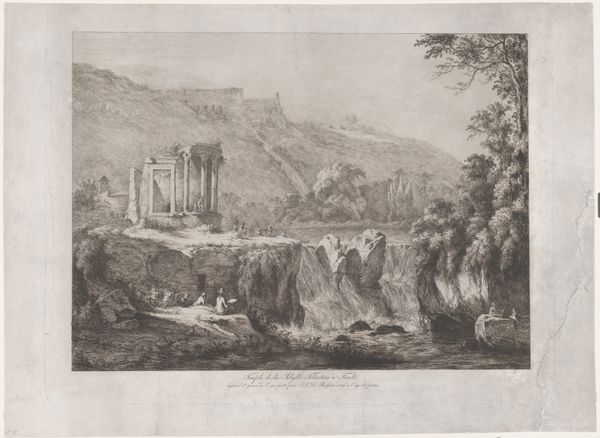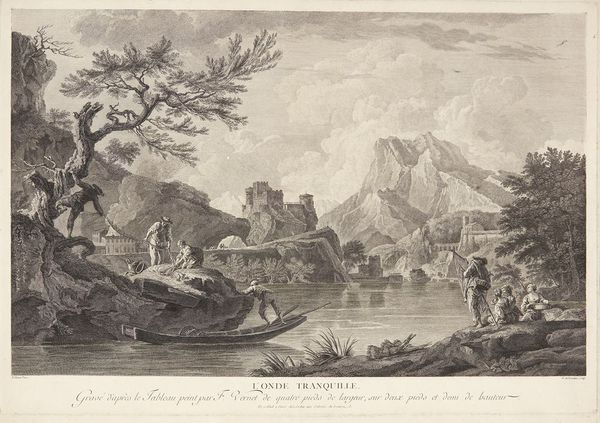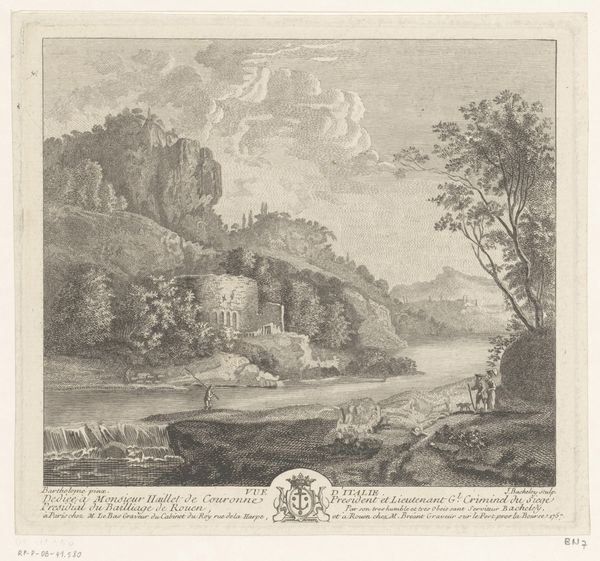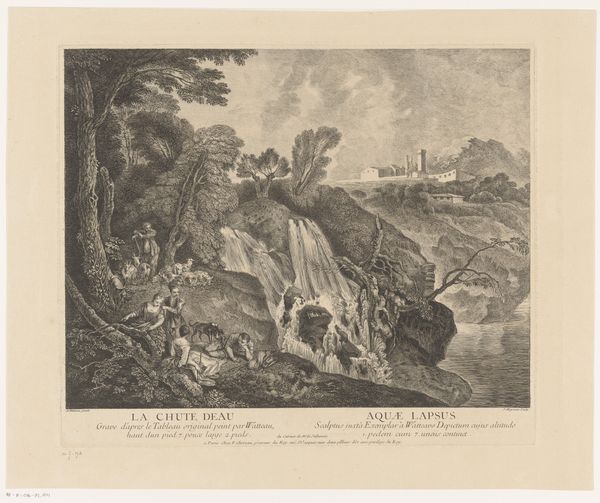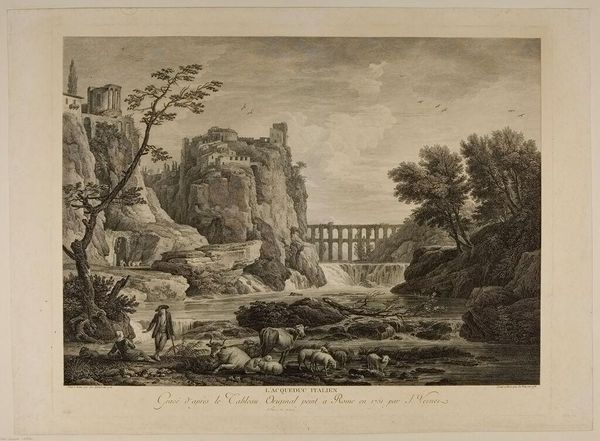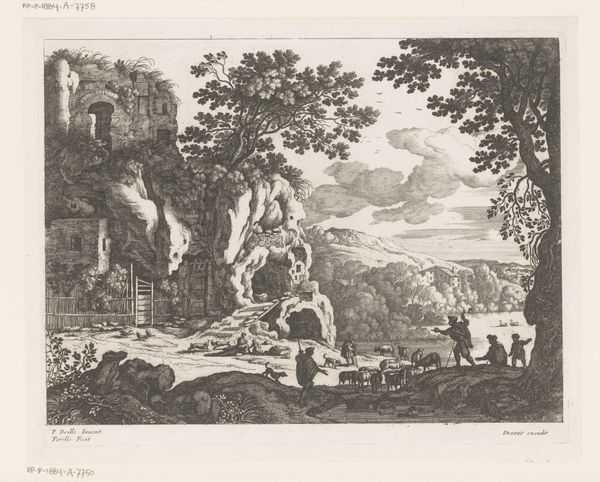
Dimensions: height 465 mm, width 589 mm
Copyright: Rijks Museum: Open Domain
Curator: Today, we're looking at "Avond," an etching and engraving made by Louis Jacques Cathelin between 1765 and 1767. Editor: Immediately, the monochromatic palette gives the whole scene a dreamlike, almost melancholic air, doesn't it? The tonal range is remarkable. Curator: Absolutely. Consider how the artist uses the waterfall as a potent symbol, channeling both nature’s raw power and the ceaseless flow of time. Waterfalls appear across cultures, often signifying cleansing, renewal, or even the passage to the afterlife. Editor: I'm particularly struck by the artist’s handling of light. Notice how it cascades across the craggy rock formations, creating depth and volume? The contrast illuminates the human figures almost theatrically. It has this interesting distribution between highlights and shadows. Curator: And who are these figures? The woman on horseback is in harmony with the environment. Her elevated position and elegant posture suggests she could be divine, representing noble or goddess figures from mythology. The etching seems like it tries to capture not just a landscape, but also a mythological tale, with humans as active components within it. Editor: While I see the possible symbolism, I appreciate it purely through the dynamics of light and shade. I appreciate the detail on the human's apparel and the rendering of rougher materials for the rocky area, while the overall balanced composition and chiaroscuro provide its visual interest. Curator: Both perspectives, I think, allow us a richer encounter with "Avond." There's a beautiful dialogue happening between nature's permanence and humanity's journey through it. Editor: A reminder of how form and narrative intersect to create evocative experiences. It is nice to see landscapes being regarded through Baroque art techniques.
Comments
No comments
Be the first to comment and join the conversation on the ultimate creative platform.

